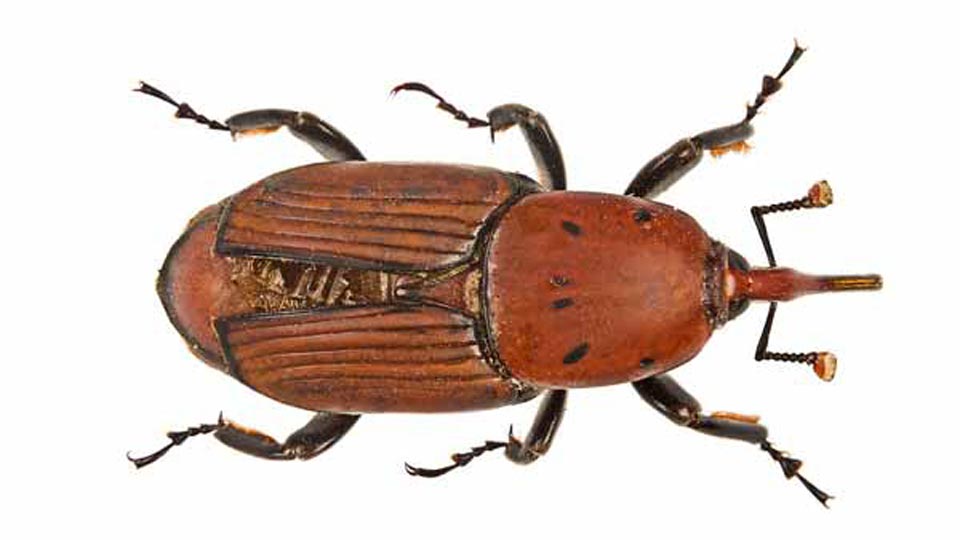Rhynchophorus ferrugineus
Author Name

The palm weevil Rhynchophorus ferrugineus is one of two species of snout beetle known as the red palm weevil, Asian palm weevil or sago palm weevil. The adult beetles are relatively large, ranging between two and four centimeters long, and are usually a rusty red colour—but many colour variants exist and have often been classified as different species (e.g., Rhynchophorus vulneratus). Weevil larvae can excavate holes in the trunk of a palm trees up to a metre long, thereby weakening and eventually killing the host plant. As a result, the weevil is considered a major pest in palm plantations, including the coconut palm, date palm and oil palm.[2]
Originally from tropical Asia, the red palm weevil has spread to Africa and Europe, reaching the Mediterranean in the 1980s. It was first recorded in Spain in 1994,[3] and in France in 2006. Additional infestations have been located in Malta, Italy (Tuscany, Sicily, Campania, Sardinia, Lazio, Marche, Puglia and Liguria), Croatia and Montenegro. It is also well established throughout most of Portugal, especially in the South.[4] It also has established in Morocco, Tunisia, and other North African countries.[5] The weevil was first reported in the Americas on Curaçao in January 2009[6] and sighted the same year in Aruba.[7] It was reported in the United States at Laguna Beach, California late in 2010[8][9] but this was a misidentification of the closely related species, Rhynchophorus vulneratus, and it did not become established.[10]
Larvae of Rhynchophorus ferrugineus are considered a delicacy in Southeast Asian cuisine. In some regions, however, larvae farming is strictly prohibited to prevent the potential devastation of plantation crops.[11]